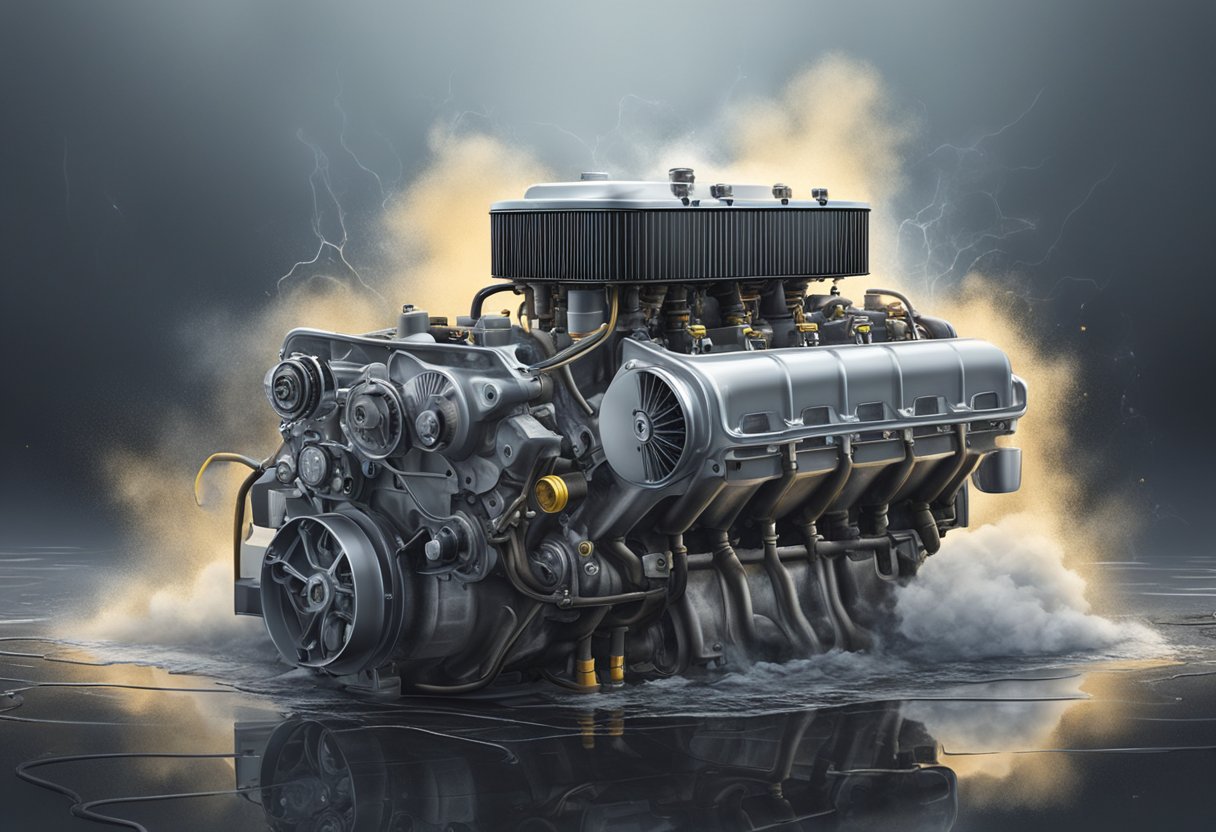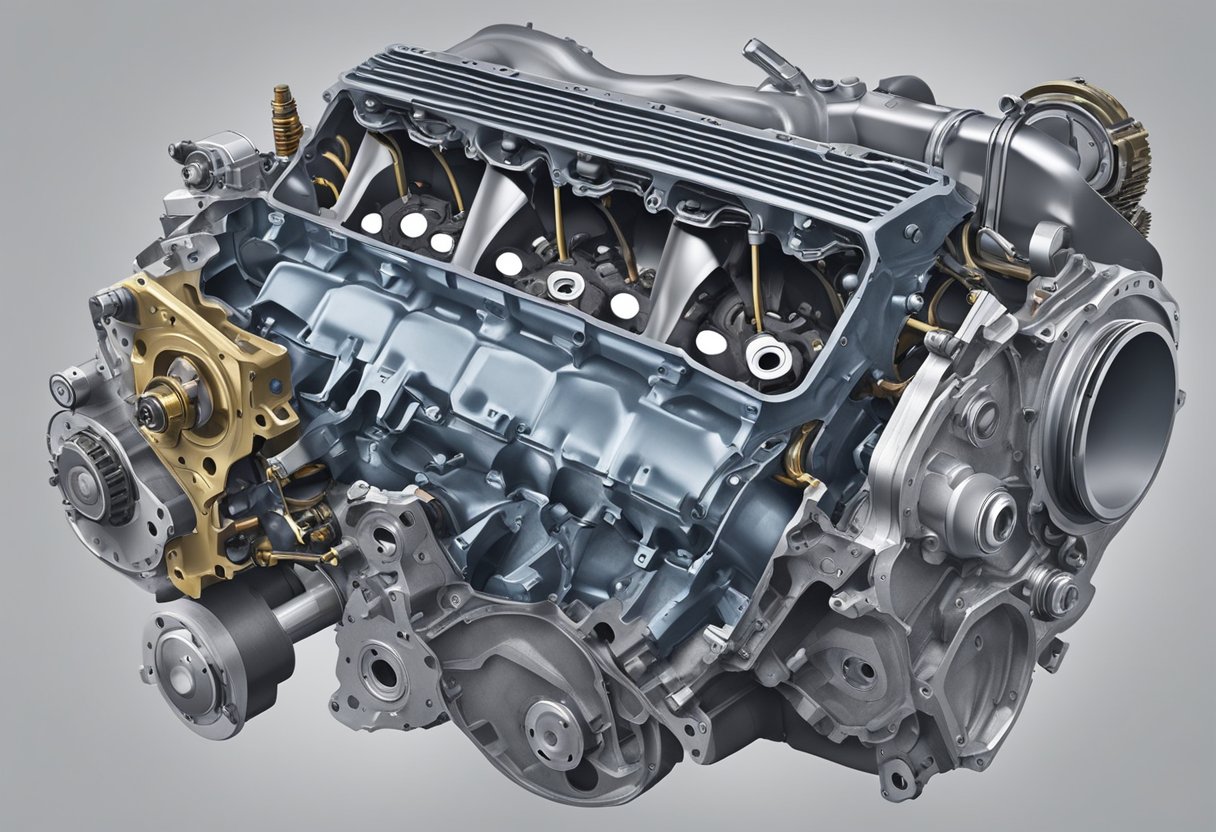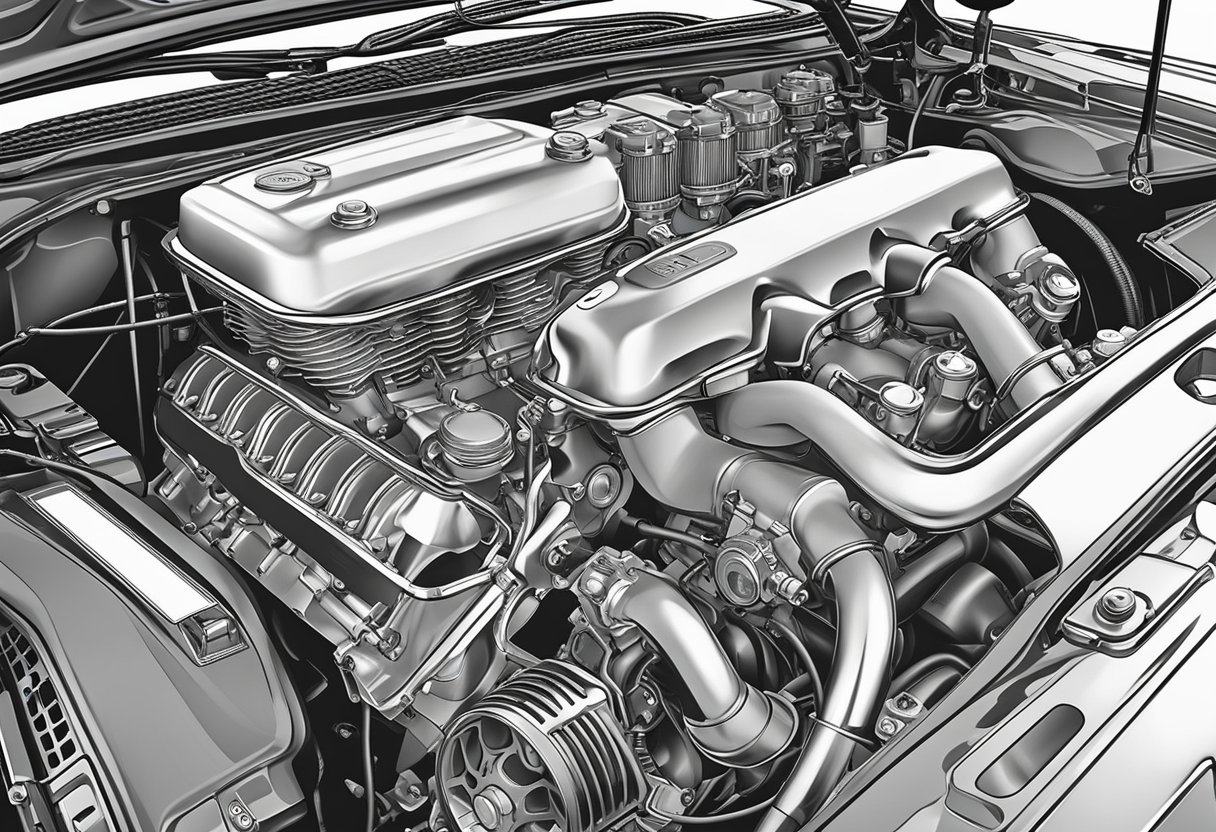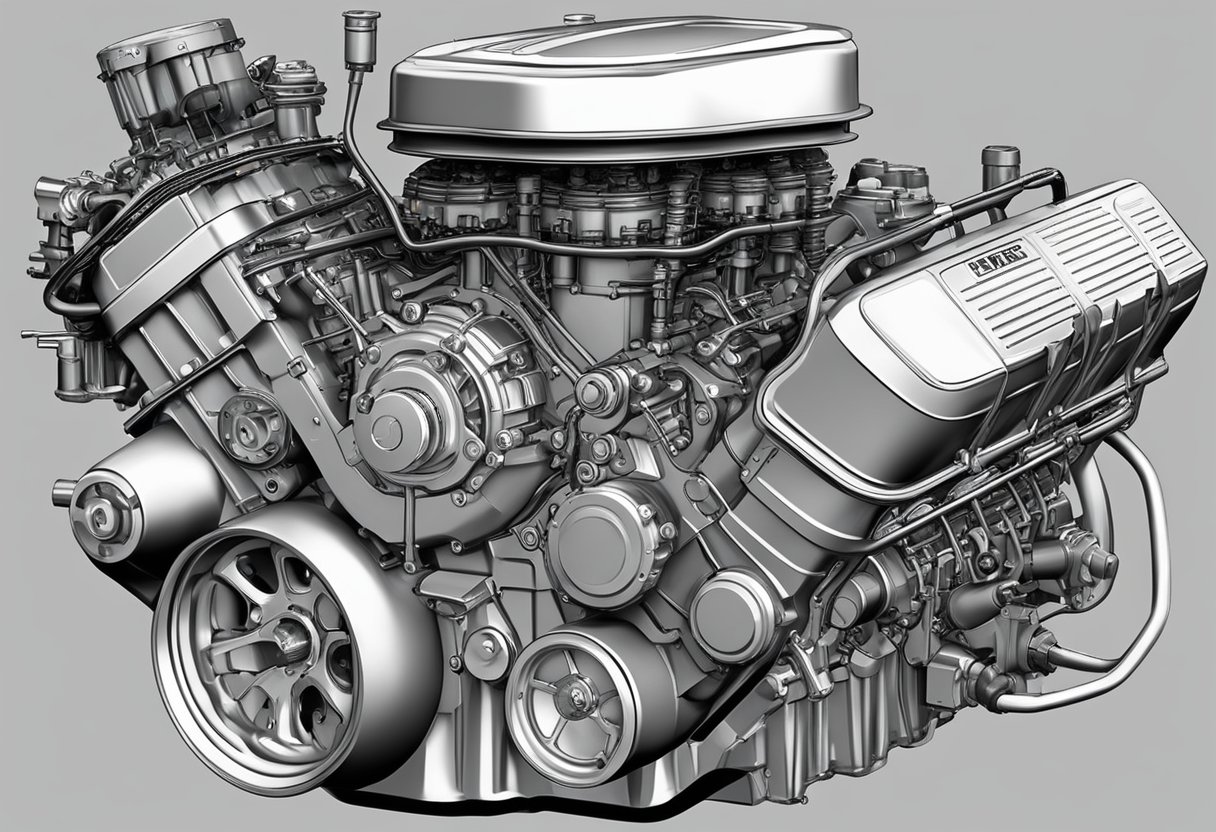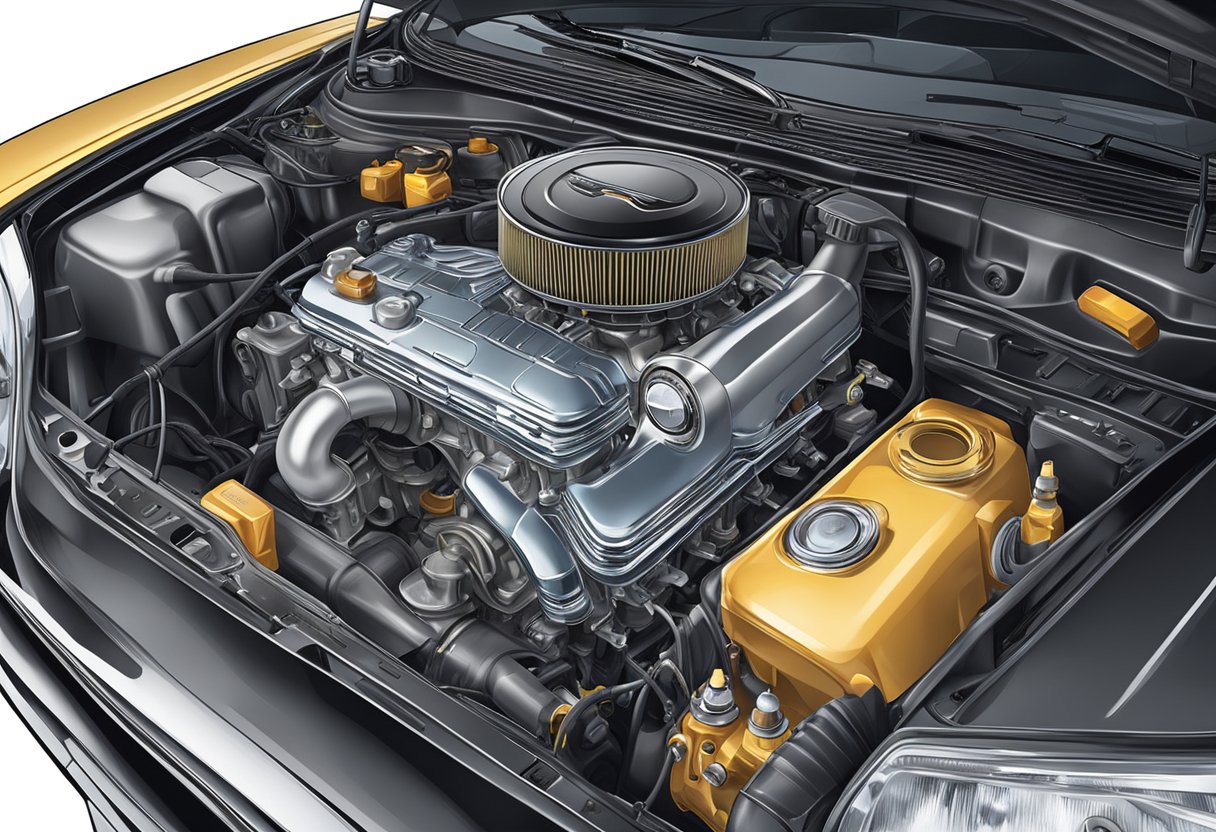Recognizing symptoms of timing cover failure is essential to avoid further damage to your vehicle’s engine.
The timing cover is a crucial component of your engine that protects the timing belt and chain, which control the opening and closing of the engine’s valves.
A damaged or worn timing cover can lead to significant engine damage, and in some cases, engine failure.
One of the most common symptoms of timing cover failure is an oil leak.
The timing cover is sealed with a gasket that prevents oil from leaking out.
If the gasket fails, oil can leak out and cause damage to other engine components.
You may notice oil spots under your vehicle or a burning oil smell when driving.
Another symptom of timing cover failure is a rattling noise coming from the engine.
This noise is caused by the timing chain or belt hitting against the loose timing cover.
If you hear this noise, you should have your vehicle inspected immediately to prevent further damage.
Fundamentals of Timing Cover Function
The timing cover is an essential part of your engine’s timing system.
It is a protective cover that shields the timing belt or chain from dirt, debris, and other contaminants.
The timing cover also helps to keep the engine oil from leaking out of the engine.
The timing cover is usually made of aluminum or plastic, and it is bolted to the front of the engine block.
It houses the timing chain or belt, the camshaft, and the crankshaft.
The timing chain or belt is responsible for synchronizing the camshaft and the crankshaft, which is crucial for the engine’s proper operation.
The timing cover has several components that work together to ensure proper engine timing.
These components include the timing chain or belt, the tensioner, the guides, and the sprockets.
The timing chain or belt is responsible for driving the camshaft and the crankshaft.
The tensioner keeps the chain or belt tight, and the guides keep it in place.
The sprockets are responsible for transferring the power from the chain or belt to the camshaft and the crankshaft.
If the timing cover fails, it can cause serious damage to your engine.
A failed timing cover can cause the timing chain or belt to slip or break, which can lead to engine damage or failure.
It can also cause oil to leak out of the engine, which can lead to engine damage or failure.
In summary, the timing cover is an essential component of your engine’s timing system.
It protects the timing chain or belt from contaminants and helps to keep the engine oil from leaking out of the engine.
Understanding the fundamentals of timing cover function can help you recognize the symptoms of timing cover failure and prevent serious engine damage.
Common Symptoms of Timing Cover Failure
If you own a vehicle with an internal combustion engine, it is essential to know the warning signs of timing cover failure.
The timing cover is a crucial component of the engine, responsible for protecting the timing chain and gears from debris and contaminants.
When it fails, it can cause extensive damage to the engine and result in costly repairs.
Here are some common symptoms of timing cover failure that you should be aware of:
Oil Leaks
One of the most apparent signs of timing cover failure is oil leaks.
The timing cover is sealed with a gasket, which can wear out over time and cause oil to leak out.
You may notice oil stains on your driveway or garage floor, or a burning oil smell coming from the engine.
If left unaddressed, oil leaks can cause significant damage to the engine and lead to engine failure.
Unusual Noises
Another symptom of timing cover failure is unusual noises coming from the engine.
You may hear a rattling or ticking sound, which can indicate that the timing chain or gears are loose or damaged.
These noises can become louder as you accelerate or decelerate and should not be ignored.
If you hear any unusual engine noises, it is best to have your vehicle inspected by a professional mechanic.
Overheating Engine
Timing cover failure can also cause your engine to overheat.
The timing cover helps regulate the flow of coolant through the engine, and if it fails, the coolant may leak out or not circulate properly.
This can cause your engine to overheat, which can lead to engine damage or failure.
If you notice that your engine is running hotter than usual, it is essential to have it inspected by a professional mechanic.
In conclusion, recognizing the symptoms of timing cover failure can save you time, money, and headaches in the long run.
If you notice any of the above symptoms, it is crucial to have your vehicle inspected by a professional mechanic as soon as possible to prevent further damage to your engine.
Diagnostic Procedures for Timing Cover Issues
If you suspect that your timing cover is failing, there are several diagnostic procedures that can help you identify the issue.
Here are three methods that can be used to diagnose timing cover issues:
Visual Inspection
A visual inspection is a quick and effective way to identify timing cover issues.
Begin by removing the timing cover and inspecting it for signs of damage or wear. Look for cracks, corrosion, or any signs of leaks.
Inspect the gasket and seals for any signs of damage or wear. Check the timing chain for any signs of wear or damage.
If you notice any of these issues, it is likely that your timing cover is failing.
Pressure Testing
Pressure testing is another way to diagnose timing cover issues. This involves pressurizing the cooling system and looking for leaks.
Start by removing the radiator cap and attaching a pressure tester to the radiator.
Pump the pressure tester to the recommended pressure, and then wait for a few minutes.
If you notice any pressure drops, it is likely that your timing cover is failing.
Component Analysis
Component analysis is a more in-depth diagnostic procedure that involves disassembling the engine to inspect the timing cover and related components.
This method is typically used when other diagnostic procedures have failed to identify the issue.
During component analysis, the timing cover and related components are thoroughly inspected for signs of wear or damage.
This allows you to identify the exact cause of the issue and make the necessary repairs.
By using one or more of these diagnostic procedures, you can identify timing cover issues and take the necessary steps to fix them.
Keep in mind that timing cover failure can cause serious engine damage if left untreated, so it is important to address any issues as soon as possible.
Potential Causes of Timing Cover Damage
If you notice any symptoms of timing cover failure, it’s important to understand the potential causes to prevent future damage.
Here are some of the most common causes of timing cover damage:
Worn Out Gaskets
One of the most common causes of timing cover damage is worn out gaskets.
Gaskets are responsible for sealing the timing cover to the engine block and preventing oil leaks.
Over time, gaskets can become brittle and crack, allowing oil to seep out and damage the timing cover.
If you notice oil leaks around the timing cover, it’s important to inspect the gaskets and replace them if necessary.
Impact Damage
Timing covers are designed to protect the timing belt or chain and other engine components from debris and other hazards.
However, impact damage can occur if you hit a curb or drive over a large pothole.
This can cause the timing cover to crack or break, which can lead to serious engine damage.
If you notice any signs of impact damage, it’s important to inspect the timing cover and replace it if necessary.
Bolt Fastening Errors
Another potential cause of timing cover damage is bolt fastening errors.
If the bolts that secure the timing cover to the engine block are not tightened correctly, it can cause the cover to become loose and vibrate, leading to cracks and other damage.
It’s important to follow the manufacturer’s torque specifications when tightening the bolts and to inspect them regularly to ensure they are secure.
By understanding the potential causes of timing cover damage, you can take steps to prevent future issues and keep your engine running smoothly.
If you notice any symptoms of timing cover failure, it’s important to address the issue as soon as possible to prevent further damage.
Repair and Replacement Options
If you suspect that your timing cover is failing, it’s important to take action quickly to prevent further damage to your engine.
Fortunately, there are a few repair and replacement options available to you.
Sealant and Gasket Replacement
If the timing cover is leaking due to a failed gasket or sealant, a simple repair can often fix the problem.
This involves removing the old gasket or sealant and replacing it with a new one.
It’s important to use high-quality gasket material and sealant to ensure a proper seal.
Timing Cover Replacement
If the timing cover itself is damaged or cracked, it will need to be replaced.
This is a more complex repair that involves removing the old cover and installing a new one.
In some cases, other engine components may need to be removed to gain access to the timing cover.
When replacing the timing cover, it’s important to choose a high-quality replacement part.
OEM parts are typically the best choice, as they are designed specifically for your engine and are guaranteed to fit properly.
Aftermarket parts may be cheaper, but they may not be of the same quality as OEM parts.
In summary, if you suspect that your timing cover is failing, it’s important to take action quickly.
A simple repair may be all that’s needed, but if the cover itself is damaged, it will need to be replaced.
Choose high-quality parts and work with a trusted mechanic to ensure that the repair is done properly.
As an Amazon Associate we earn from qualifying purchases.








